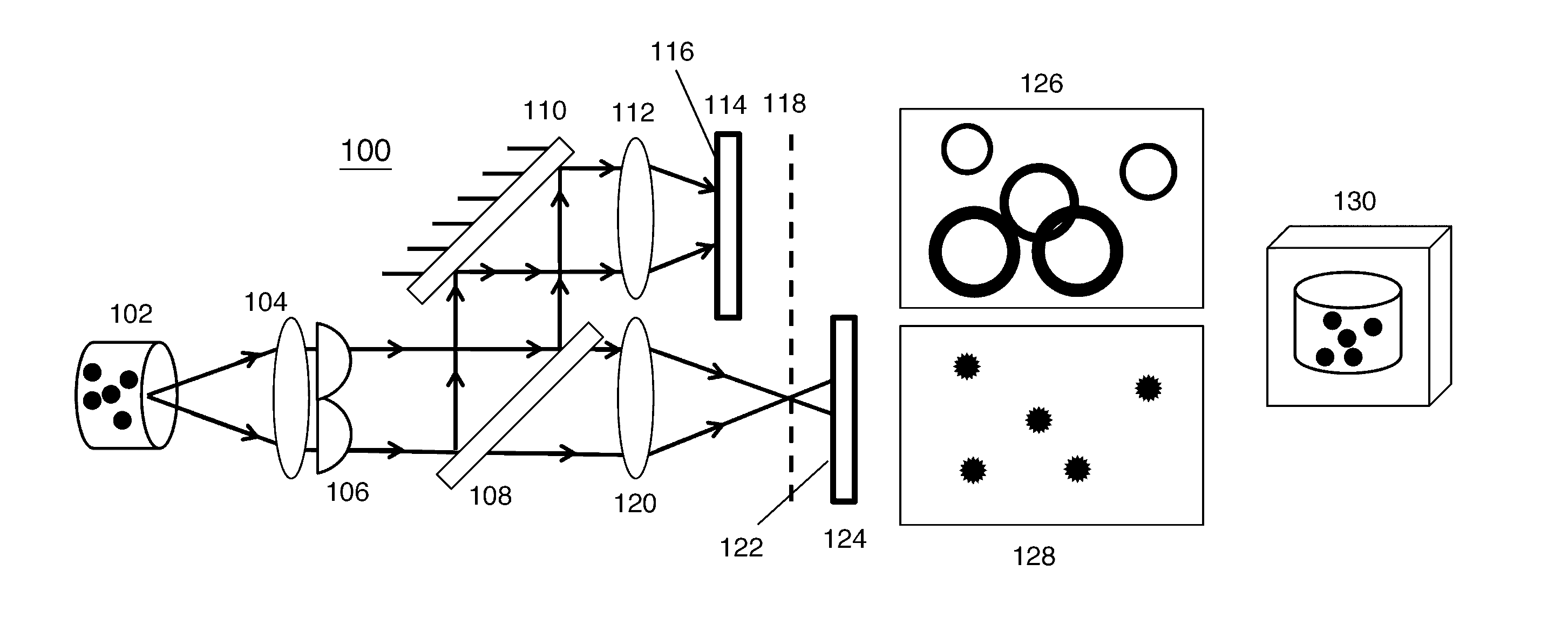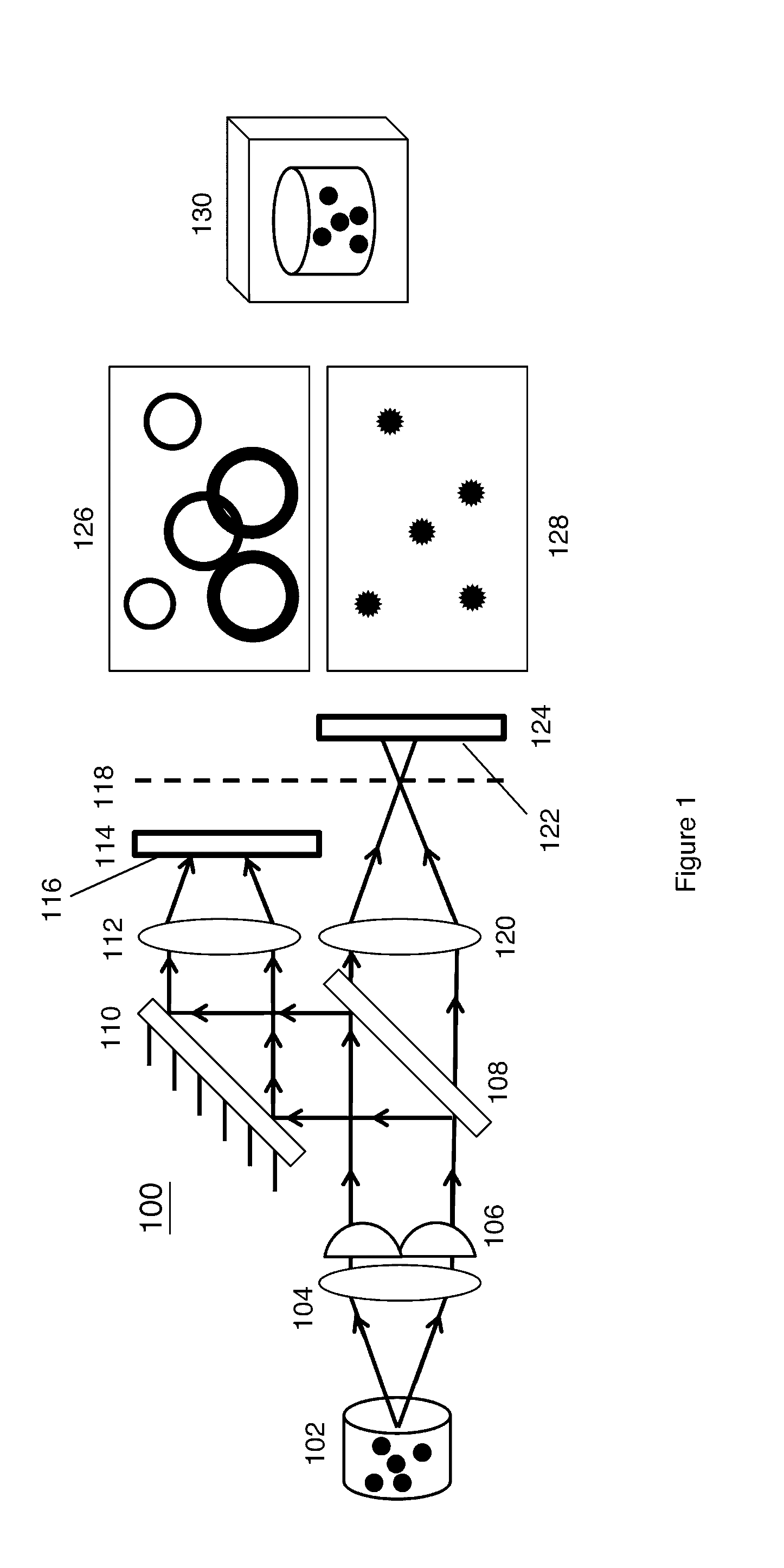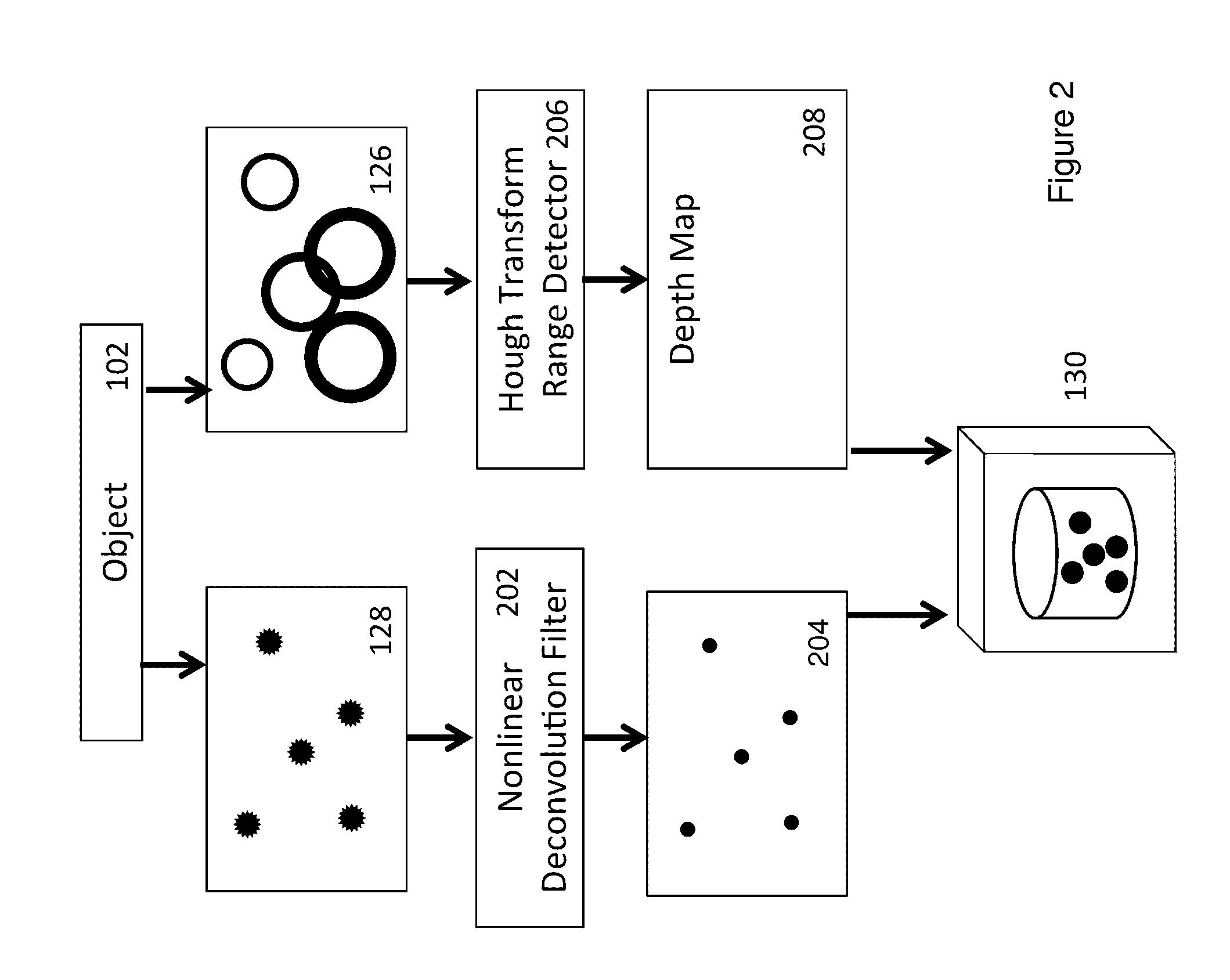Engineered Point Spread Function for Simultaneous Extended Depth of Field and 3D Ranging
a technology of extended depth of field and spread function, applied in the field of imaging, can solve the problems of slow process, many features inside thick objects may appear blurred, and the image depth of field is rapidly decreased, so as to reduce the effect of image nois
- Summary
- Abstract
- Description
- Claims
- Application Information
AI Technical Summary
Benefits of technology
Problems solved by technology
Method used
Image
Examples
Embodiment Construction
[0035]FIG. 1 is a schematic block diagram illustrating apparatus 100 accomplishing extended depth of field and ranging according to the present invention. Apparatus 100 might be a basic compound microscope design, with two additions: waveplate 106 and a beam-splitter 108 / mirror 110 combination for forming two images 126, 128 at planes 116 and 122.
[0036]Object 102 might comprise a sample containing elements at various depths. It is shown here as several points, for clarity in the following explanations. Light from object 102 is passed through lens 104 and waveplate 106. Waveplate 106 is located (for example) at the back aperture plane of the microscope objective, and causes the image to have a relatively focus invariant point spread function on one side of a plane of best focus, while causing the point spread function shapes to vary with range on the other side of the plane of best focus (for example, points might generate rings whose circumferences vary as a function of range or dep...
PUM
 Login to View More
Login to View More Abstract
Description
Claims
Application Information
 Login to View More
Login to View More - R&D
- Intellectual Property
- Life Sciences
- Materials
- Tech Scout
- Unparalleled Data Quality
- Higher Quality Content
- 60% Fewer Hallucinations
Browse by: Latest US Patents, China's latest patents, Technical Efficacy Thesaurus, Application Domain, Technology Topic, Popular Technical Reports.
© 2025 PatSnap. All rights reserved.Legal|Privacy policy|Modern Slavery Act Transparency Statement|Sitemap|About US| Contact US: help@patsnap.com



